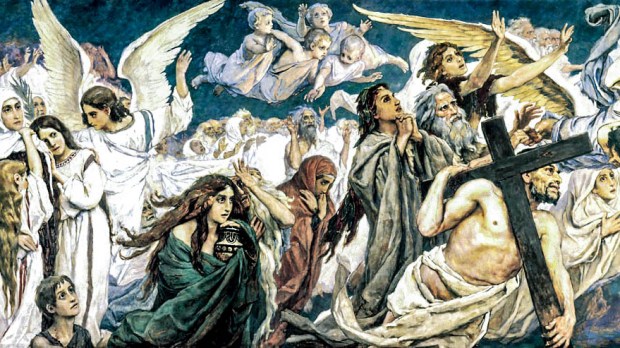Lenten Campaign 2025
This content is free of charge, as are all our articles.
Support us with a donation that is tax-deductible and enable us to continue to reach millions of readers.
“Watch, therefore;you do not know when the Lord of the house is coming,whether in the evening, or at midnight,or at cockcrow, or in the morning.May he not come suddenly and find you sleeping.What I say to you, I say to all: ‘Watch!'”
—Mark 13:35-37
“It’s beginning to look a lot like Christmas,” or so says the cheery holiday song by Meredith Willson. And yet, when we enter our parish churches on Sunday, we won’t be greeted by Christmas trees and poinsettias or lift our voices in joyful hymns singing “glory to the Newborn King.” Instead, we will hear a “crisis mode” Gospel (Mark 13:33-37) that calls us to vigilance, watchfulness, and prayer. It is certainly a disconnect.
Unfortunately, for too many of us, Advent is a sort of pre-Christmas season that only thinly veils the all-out joy of Christmas. But with this Sunday’s readings and prayers, the Church is reminding us that there is much more to Advent than just anticipating the birthday of Jesus. And so, for the next three weeks, we will focus on the Lord’s return at the end of time and also reflect on how we find him coming among us today.
This sense is captured in the beautiful Preface that is prayed before the Eucharistic Prayer in the first days of Advent:
It is truly right and just,our duty and our salvation,always and everywhere to give you thanks,Lord, holy Father,almighty and eternal God,through Christ our Lord.For he assumed at his first coming the lowliness of human flesh,and so fulfilled the design you formed long ago,and opened for us the way to eternal salvation,that, when he comes again in glory and majestyand all is at last made manifest,we who watch for that day may inherit the great promisein which now we dare to hope …
In her book, The Liturgical Year, Benedictine sister Joan Chittister reflects on this when she writes, “The function of Advent is to remind us what we’re waiting for as we go through life too busy with things that do not matter to remember the things that do. When year after year we hear the same scripture and the same hymns of longing for the life to come, of which this one is only a shadow, it becomes impossible to forget the refrains of the soul.”
All of this makes Advent a season of tension. A time of “already, but not yet.” While we look forward to celebrating the Incarnation at Christmas (the truth that in Jesus of Nazareth, God became a human), we also spend these days looking toward the future, to the second Advent of Christ, when he will return in glory and the promises made to the prophets will be fulfilled: “Return for the sake of your servants, / the tribes of your heritage. / Oh, that you would rend the heavens and come down, with the mountains quaking before you, / while you wrought awesome deeds we could not hope for, / such as they had not heard of from of old” (Isaiah 63:17, the First Reading)
Truly, we live in a time between the comings—the advents—of Christ. As the Protestant writer William Stringfellow wrote, “In the first Advent, Christ came into the world, bringing the good news of salvation; in the next Advent, Christ the Lord comes as Judge of the world, to establish the reign of the Word of God. This is the truth, which the world hates, which we bear in our minds and hearts and by which we live in the world in the time between the two Advents.”
Living in the tension of the “time between” is about learning to wait, about not knowing exactly what will come tomorrow and recognizing that, whatever it is, it is part of the mystery of our salvation. Advent is ultimately a season that is oriented toward the future, not the past. These are days to remember and celebrate the gift of the Child of Bethlehem, but this is also a time to take a step back from the frolicking and busy-ness of the holidays to reflect on the future and the fundamental question of Advent: What are you waiting for?
How can you take time in the coming weeks for prayer, watching, and waiting? What can you do in your home and with your family to emphasize the hope and expectation of Advent? How can you keep your heart from becoming “drowsy” in these Advent days?
Words of Wisdom: “We do not preach only one coming of Christ, but a second as well, much more glorious than the first. The first coming was marked by patience; the second will bring the crown of a divine kingdom …
“At the first coming he was wrapped in swaddling clothes in a manger. At his second coming he will be clothed in light as in a garment. In the first coming he endured the cross, despising the shame; in the second coming he will be in glory, escorted by an army of angels.
“We look then beyond the first coming and await the second.”—St. Cyril of Jerusalem

